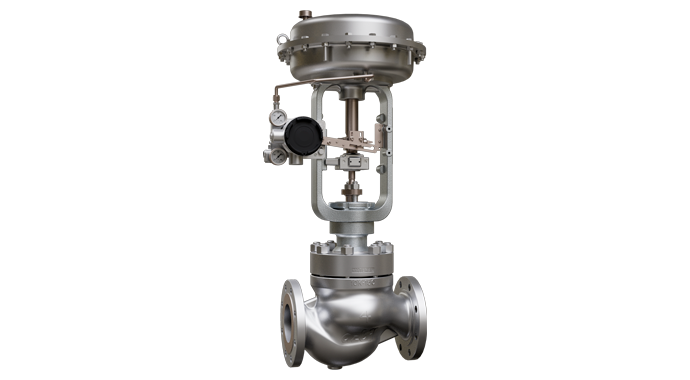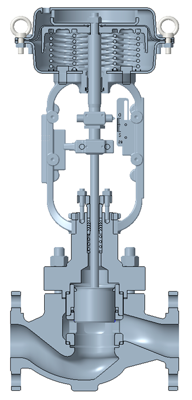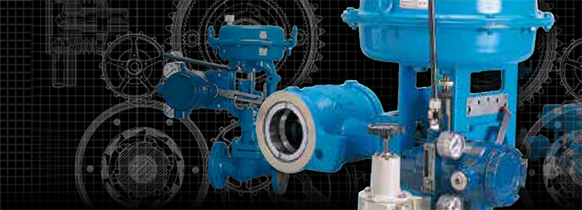
The Control Valve 6000 Series , utilizing optimal design through CFD analysis, significantly enhance control performance while contributing to productivity improvements throughout the entire plant lifecycle. This includes reduced installation costs, space-saving design, and improved maintainability.
Control Valve 6000 Series
| Valve type | Pressure-balanced cage type control Valve | Image

|
|---|---|---|
| Model No. | AC_11 | |
| Size | 1-1/2" to 8" | |
| Pressure rating | JIS B2220-2012 JIS10K, 16K, 20K, 30K JPI-7S-15-2011 Class 150, 300, 600 ASME B16.5-2020 Class 150, 300, 600 HG/T20592-2009 PN10, 16, 25, 40, 63, 100 HG/T20615-2009 Class 150(PN20), 300(PN50), 600(PN110) | |
| End connection | RF flange | |
| Body material | ASTM A216 WCB / JIS SCPH2 ASTM A351 CF8 / JIS SCS13A ASTM A351 CF8M / JIS SCS14A | |
| Trim material | ASTM A351 CF8M ASTM A351 CF8M + CoCr-A seat ASTM A747 CB7Cu-1 | |
| Temperature range | -45 to +400°C | |
| Leakage performance | Class IV, V | |
| Cv range | 14 to 863 | |
| Range ability | 30:1 to 100:1 | |
| Application | a elastic seat structure | |
| Option | Low-emission gland packing system |
Low Seat Leakage
By adopting a elastic seat structure, IEC Class V has been achieved for cage valves.
High Rangeability
A wide rangeability of 100:1 enables superior control performance.
Optimal Structural Design
Through precise simulations of fluid behavior using CFD analysis*, we have implemented optimal structural design.
Utilization of Flow Test Facilities Compliant with International Standards
By utilizing flow test facilities compliant with international standards, owned by Azbil Kyoto Co., Ltd. (Location: Funai-gun, Kyoto Prefecture; President: Toshikazu Ishii), we have significantly improved reliability and efficiency through actual measurement evaluations. This also allows for the reduction of energy loss through appropriate valve selection.
*CFD Analysis: Computational Fluid Dynamics refers to the numerical simulation technology that models the flow of fluids (liquids and gases) on a computer.


